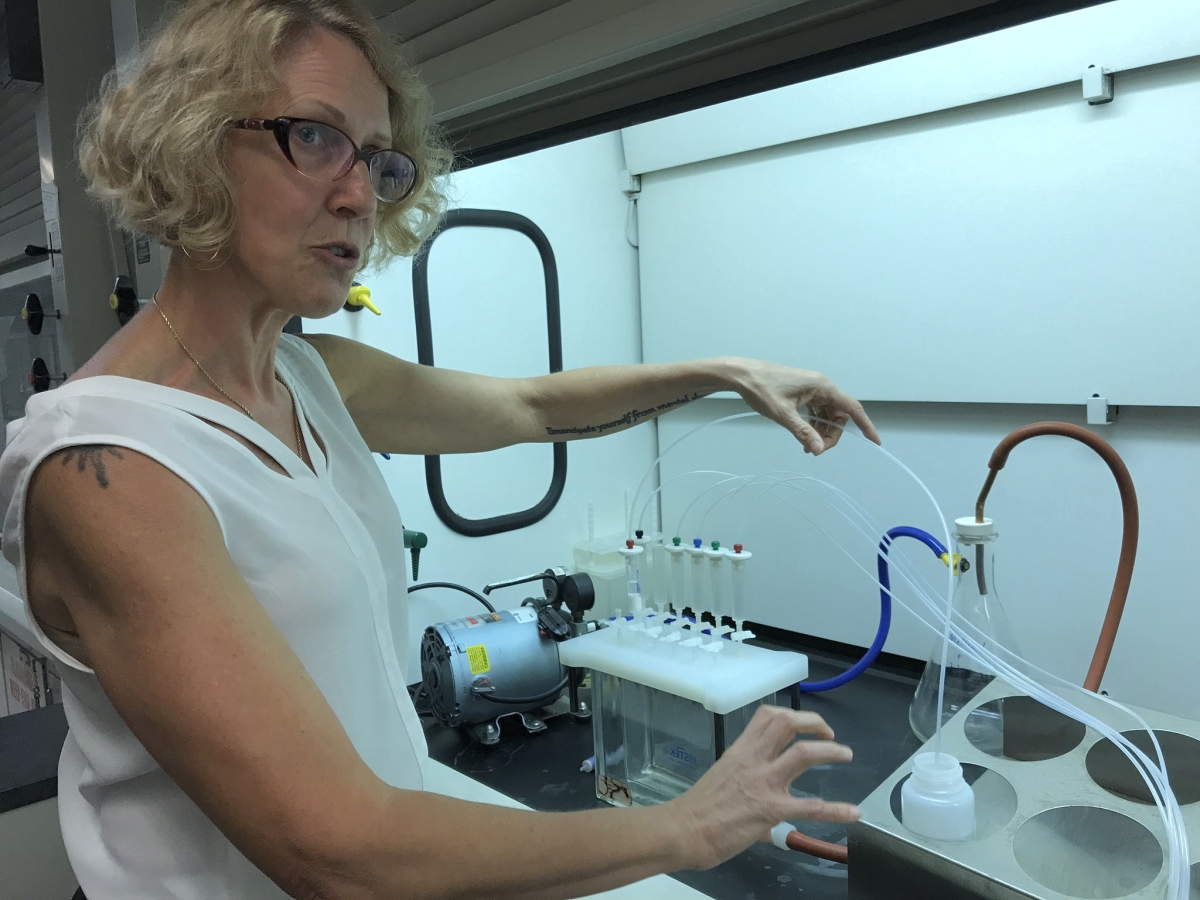Toxic "forever chemicals" are turning up in more and more places as the federal government joins a growing number of states, including Pennsylvania in the Bay watershed, in moving to regulate at least some of them.
PFAS, or per– and polyfluoroalkyl substances, have been detected in more than 75% of community water systems tested so far in Maryland and in nearly 40% of drinking water samples analyzed in Pennsylvania, according to data from both states.
The surveys found two water systems in each of those states with PFAS levels higher than the U.S. Environmental Protection Agency's health advisory threshold.
PFAS are a group of more than 9,000 highly persistent chemicals, many of them toxic, which have been in wide use since the 1940s. They are found in everyday consumer products such as nonstick cookware, pizza boxes and stain repellants. Their use in fire-fighting foams, though, has resulted in widespread PFAS groundwater contamination around airports and military bases nationwide.
The Maryland Department of the Environment has
tested 129 water treatment plants statewide since 2019. Those plants, chosen because of their proximity to potential PFAS sources, furnish drinking water to 4.3 million residents, or 70% of Maryland's population.
The MDE said levels above the EPA threshold were detected in treatment plants furnishing drinking water to 18,600 residents of the city of Westminster and 6,300 residents of the town of Hampstead, both in Carroll County.
After confirming the initial results, state officials ordered the wells with high PFAS levels supplying water to those systems be taken offline. Investigators have yet to pin down the contamination sources, but Denise Keehner, an assistant MDE secretary, noted that there is a fire training facility near the Hampstead well.
In Pennsylvania, the Department of Environmental Protection
sampled 372 large and small water systems, including some serving private businesses, that were near sources of contamination. Another 40 baseline samples were taken from systems not close to known or suspected PFAS sources.
One site with results higher than the EPA's guideline was a municipal water system serving about 1,500 residents of Saegertown, north of Pittsburgh. In Saegertown, system operators identified and curtailed use of a well with high PFAS levels, said Lisa Daniels, drinking water bureau director for the DEP.
The other came from a well furnishing drinking water to State of the Art, Inc., an electronic components manufacturer in State College with more than 100 employees, according to the company website.
State officials have yet to identify the sources of PFAS in either case, but the State College factory is located near the municipal airport, which has used PFAS-laden firefighting foam.
Prodded by its legislature, Virginia's Department of Health has been
tasked with sampling drinking water from up to 50 water supplies and waterworks for six PFAS compounds. The department is required to report the results by Dec. 1.
Certain PFAS can accumulate and stay in the human body for long periods of time. Studies using lab animals have linked exposure to high levels of PFAS with a variety of health problems, including liver and immune system damage, birth defects and increased risk of cancer.
Even so, there are no enforceable federal standards limiting how much is safe to consume in drinking water. In 2016, the EPA set an
advisory level of 70 parts per trillion for either or both of just two of the more thoroughly studied compounds, perfluorooctane sulfonate (PFOS) and perfluorooctanoic acid (PFOA).
States usually rely on federal agencies to regulate exposure to harmful chemicals, often because they lack the technical expertise, laboratory capacity and other resources to make such determinations.
But with the EPA taking years to act on PFAS, at least 22 states have taken steps to limit several of the compounds in their drinking water, according to the Environmental Council of the States. Seven states, including New York, have set or proposed their own enforceable maximum contaminant levels, while 10 others have advisory guidelines.
In Pennsylvania, which has been grappling with multiple cases of PFAS contamination in community water systems, the Wolf administration had vowed two years ago to begin the process of setting its own health-based limits on PFAS in drinking water. In June, the state Environmental Quality Board approved the DEP's recommendation to proceed with setting a maximum contaminant level for PFOA. The department plans to propose that level later this year, according to DEP spokesman Jamar Thrasher.
Maryland officials say they intend to keep looking for sources of PFAS contamination in the state, sampling another 62 water systems, and focus on reducing exposures while leaving the standard setting to the federal government. The MDE's Keehner said the EPA appears to be "moving pretty quickly" to assemble the latest scientific data to provide a legally defensible basis for limiting PFAS in drinking water.
Earlier this year, the EPA declared its
intent to regulate levels of PFOA and PFOS in drinking water, but it will take a year or more to actually set maximum safe levels. The agency also has announced plans to regulate PFAS in
wastewater discharges from certain industries—a potential source of drinking water contamination.
Congress could require even more aggressive steps. In July, the House passed the
PFAS Action Act, which would require the EPA to regulate PFOA and PFOS in drinking water and set deadlines for determining whether to treat those and many of the other compounds as "hazardous substances" subject to mandatory cleanup under the federal Superfund law.
The measure faces an uncertain future, though, in the closely divided Senate.
'Forever chemicals' frequently found in Maryland, Pennsylvania drinking water

June Black, organic chemistry chief of the Pennsylvania Department of Environmental Protection's Bureau of Laboratories, demonstrates equipment used to extract PFAS from water samples. The lab acquired new equipment to enable DEP to identify and measure concentrations of PFAS in drinking water being sampled across the state. (Bay Journal photo by Timothy B. Wheeler)


